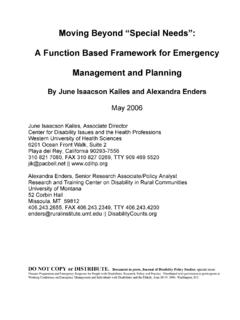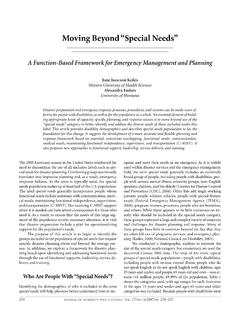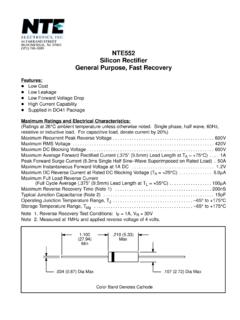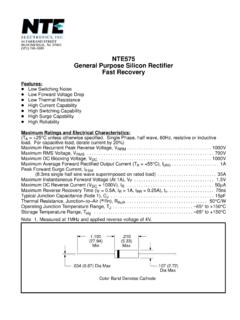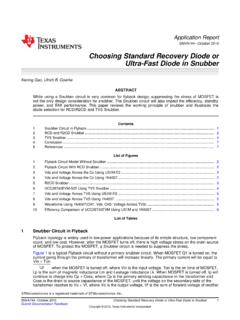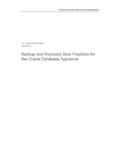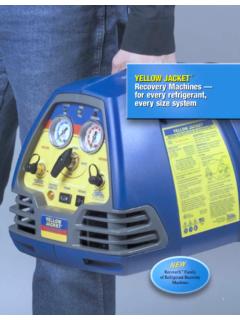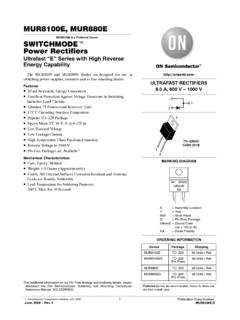Transcription of Checklist for Integrating People with Disabilities …
1 Page 1 of 39 Checklist for Integrating People with Disabilities and Others with Access and Functional Needs into Emergency Preparedness, Planning, Response & recovery By June Isaacson Kailes, Associate Director Center for Disability and Health Policy Western University of Health Sciences, Pomona, California Edition 2, 2014 Page 2 of 39 Citation: Kailes, (2014) Checklist for Integrating People with Disabilities and Others with Access and Functional Needs into Emergency Planning, Response & recovery , Edition 2, 2014, Published and distributed by the Harris Family Center for Disability and Health Policy, Copyright : 2013 Permission is granted to copy and distribute this article provided that: 1.
2 Proper copyright notice and citation is attached to each copy; 2. No alterations are made to the contents; 3. Document is not sold for profit; and 4. June Isaacson Kailes is notified of such use. Please contact This work was partially supported w ith funding through the California Emergency Management Agency, California Department of Transportation (Caltrans) and Nusura. Page 3 of 39 TABLE OF CONTENTS How to Use This Checklist Acronyms Definitions Evaluation Key Access and Functional Needs Position or Responsibility Community Partners / Public Engagement / Service Force Multipliers Funding Communication and Mass Notification Systems Guiding Principles Policies Early Warning Notification Systems Emergency Alert Systems (EAS)
3 And Press Conference Websites and Social Media Door-to-door Notification Individual and Family Emergency Preparedness Materials Evacuation and Transportation Training Long Term Care Facilities (LTCFs) Mass Care Guiding Principles Physical Accessibility of Facilities Physical Accessibility Site Set Up and Maintenance Decontamination Sheltering in Place Life-safety-wellness checks recovery Training Tabletops, Exercises, and Drills Agreements, Contracts, MOUs Resources Page 4 of 39 How to Use This Checklist When it comes to including People with Disabilities and others with access and functional needs in emergency plans, strategic plans are rarely enough.
4 Non-specific language and broad planning steps carries a substantial risk of discriminatory response and failure. It is the detail, the w ho, w hat, w here, w hen, w hy, and how embedded in the tactical plans that make the difference. These details should also be incorporated into that standard operating procedures of departments and agencies, job aids, checklists, field operation guides, and training. This Checklist is for emergency planners, managers, responders, and public information officers (PIOs) w ho have responsibility for developing, maintaining, testing, delivering and revising emergency plans and services.
5 Use it to help: Evaluate current capacity of critical elements that integrate People with Disabilities and others with access and functional needs into emergency planning, response, and recovery . o Identify areas needing attention o Set priorities o Assess progress Develop inclusive emergency plans, policies, processes, protocols, training, job aids/checklists, standard operating procedures and exercise programs. Periodically evaluate progress and identify elements that have been implemented, and areas that continue to need attention.
6 NOTE: This Checklist was first posted in 2011. It is an open work in progress designed to evolve based on new learning, continuous feedback, as new methods and tools become available. You are encouraged to refine its content and provide the author (at with feedback. What works, doesn t work, or needs work? Page 5 of 39 ACRONYMS ADA Americans with Disabilities Act ARC - American Red Cross CART - Computer Assisted Real Time Transcription CERT Citizen Emergency Response Team CMS-- Consumable Medical Supplies DME-- Durable Medical Equipment EOC -- Emergency Operations Center FAST- Functional Assessment Service Team FCC - Federal Communications Commission FEMA - Federal Emergency Management Agency LTCF- Long Term Care Facility MAA - Mutual Aid Agreement M O U - Memorandum of Understanding PAS - Personal)
7 Assistance Services SOPs Standard Operating Procedures TTY Teletypewriter VOADs Volunteer Organizations Active in Disasters VRI - Videophone Remote Interpreting Page 6 of 39 DEFINIT IONS Americans with Disabilities Act (ADA) Signed into law July 26, 1990, a civil rights legislation intended to make American society more accessible to People with Disabilities . It contains five titles: Employment, Public Service, Public Accommodations, Telecommunications, and Miscellaneous, which includes prohibitions on threats, coercion, retaliation, etc.
8 , against People with Disabilities . Computer assisted real time transcription services (CART) a system in which a stenographer or court reporter using a stenograph machine transfers the words of a speaker by means of a computer to printed words on a screen. This system is commonly used by People who are hard of hearing and does not use sign language. Usually they are People who acquired their hearing loss later in life. Community Emergency Response Team (CERT) Program educates People about disaster preparedness for hazards that may affect their area and trains them in basic disaster response skills, such as fire safety, light search and rescue, team organization, and disaster medical operations.
9 Using the training learned in the classroom and during training exercises, members can assist others in their neighborhood or workplace following an event when professional responders are not immediately available to help. Members also are encouraged to support emergency response agencies by taking a more active role in emergency preparedness projects in their community. Community partners involves engagement with and leveraging organizations that have routine, direct ties to local communities such as: schools, ethnic centers, civic, social and fraternal, neighborhood associations, community-based and faith-based organizations, private industry, trade associations, and businesses.
10 These are the organizations that provide many supports and services in their communities. These organizations should continue to be a provider of such services during and/or a following a disaster. Whole community planning is a community-oriented approach to emergency planning, response, and recovery that acknowledges a government-centric approach to disaster management will not be enough to meet the challenges of a catastrophic incident. Local collective action of and by as well as for and about individuals who live in local areas, becomes the leading edge protection.
